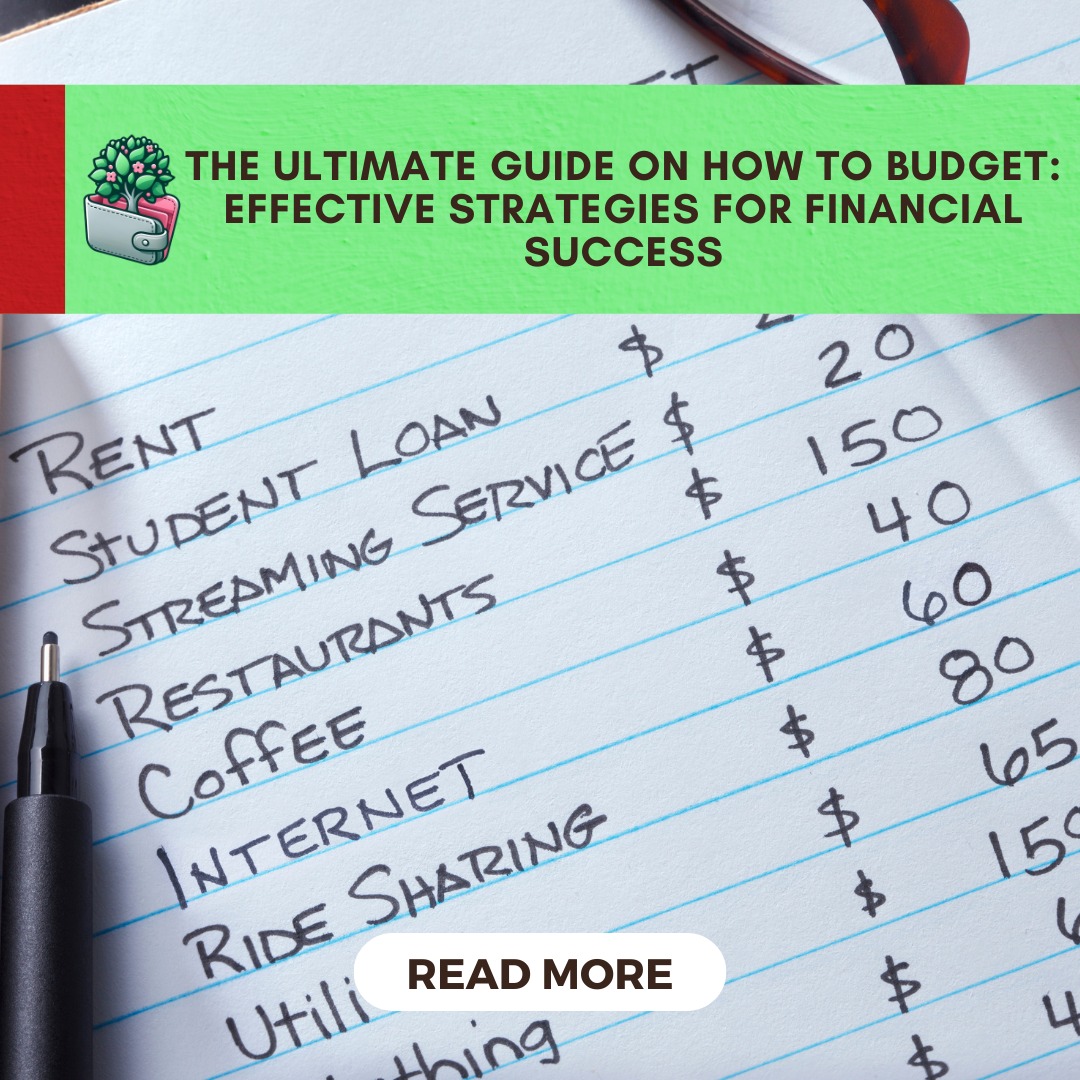Ever felt like your money just slips through your fingers? You’re not alone. For many, managing finances feels like an elusive goal, constantly out of reach. But budgeting can change that. Think of it as a financial compass, guiding you towards your dreams—whether it’s a dream vacation, a new home, or financial freedom. Far from being restrictive, budgeting empowers you to make intentional choices that align with your life goals rather than letting spending control you.
This guide will break down essential budget categories that help you organize, direct, and prioritize your spending. Budget categories are more than just labels for tracking expenses; they’re tools that shape your financial journey and bring clarity to where your money goes. Embracing these categories gives you control over your finances and creates a roadmap to reach each milestone along the way.

Table of Contents
Understanding Budget Categories
Budget categories are simple groupings for the various expenses and income sources in your financial plan. Each category represents a specific area where you allocate funds, such as housing, food, entertainment, and savings.
This budget category acts as a framework to guide your financial decisions. This structure helps you prioritize your financial goals, avoid impulsive purchases, and maintain a healthy balance in your budget. An example of this would be personal budget categories
Benefits of Using Budget Categories:
- Improved Financial Awareness: When you categorize your expenses, you gain a deeper understanding of your spending patterns, helping you identify areas where you may be overspending or underspending.
- Enhanced Decision-Making: Knowing exactly how much you’ve budgeted for each category allows you to make smarter spending choices in real time, avoiding unplanned expenses and staying on track toward your goals.
- Increased Savings Potential: With a clear view of your spending, it becomes easier to allocate funds towards savings goals, like an emergency fund or retirement, ultimately increasing your financial security.
- Reduced Stress and Anxiety: Budget categories provide a structured approach to money management, reducing the worry of unexpected expenses and financial stress, and giving you greater peace of mind.
The Psychology of Budgeting
Budgeting is not just a financial exercise; it’s also an emotional one. When you categorize your expenses, you create boundaries that encourage mindful spending, helping you stick to financial priorities rather than falling into impulsive habits. Budget categories can reduce the anxiety over money by offering a sense of control over flexible expenses. This intentional approach can gradually reshape your relationship with money, supporting both your financial and emotional well-being.
Essential Budget Categories
Creating a budget begins with organizing your expenses and savings into clear categories that help you managing money, prioritize spending, and stay on track toward your goals. Here’s a breakdown of essential budget categories including, expense categories, to guide your financial planning:
Fixed Expenses:
Fixed expenses are the costs that stay consistent each month. These monthly expenses are typically non-negotiable, meaning they must be paid to keep up with basic living needs. Setting aside a portion of your budget for these fixed expense ensures that your essential bills are covered.
- Rent/Mortgage: This is the cost of your housing, whether you rent or own.
- Utilities: Includes monthly bills for electricity, water, gas, and internet.
- Insurance: Covers health, auto, and home insurance premiums.
- Subscriptions: Monthly or annual fees for services like streaming, magazines, or software.
Not sure which method is right for you? Take our free quiz to find out!
Variable Expenses:
Variable expenses fluctuate based on your lifestyle and spending habits such as a food budget category. These are the areas where you can adjust spending more easily if you need to free up funds for savings or debt repayment.
- Groceries: Includes food expenses and household supplies that are bought regularly.
- Dining Out: Money spent on eating at restaurants, cafes, or takeout.
- Transportation: Includes costs for fuel, public transit, ride-sharing, and vehicle maintenance.
- Entertainment: Funds for hobbies, outings, events, and other recreational activities.
- Shopping: Covers clothing, personal care items, and other non-essential purchases.
Debt Payments:
If you have outstanding debts, such as credit card debt, dedicating a category to these payments is essential. Paying down debt on time helps you avoid interest charges, maintain your credit score, and work toward financial freedom.
- Credit Card Payments: Monthly payments made to reduce credit card balances.
- Loan Repayments: Payments toward personal loans, auto loans, student loans, or other debts.
Savings and Investments:
Setting aside funds for savings and investments is critical for building financial security and preparing for the future and any irregular expenses. This category ensures that a portion of your income is dedicated to long-term goals.
- Emergency Fund: A savings account set aside extra money for emergencies such as health care costs.
- Retirement Savings: Contributions to retirement accounts like 401(k), IRA, or other retirement funds.
- College Savings: Funds saved for education, whether for yourself or family members.
- Investment Accounts: Money invested in stocks, bonds, mutual funds, or other growth-oriented accounts.
By using these categories, you create a balanced, intentional budget that helps you cover essentials, manage debt, high interest debt, bank statements and build a secure financial future for other expenses. Each category serves a purpose in supporting your financial health care, empowering you to stay in control of your money and reach your financial goals.
Creating a Personalized Budget
Building a personalized budget with budget category tailored to your unique financial situation involves understanding your income, tracking expenses, setting meaningful goals, and choosing a budgeting method that fits your lifestyle. Here’s how to create a budget that works for you:
Identifying Income Sources:
Start by listing all sources of income to understand your total monthly earnings. Knowing exactly what you bring in will help you allocate funds effectively.
- Salary: Income from your main job or career.
- Side Hustle Income: Additional earnings from freelance work, part-time jobs, or gigs.
- Rental Income: Money received from rental properties or other real estate investments.
- Investment Income: Earnings from dividends, interest, or other investments.
Tracking Expenses:
Accurately tracking expenses is essential for understanding your spending patterns. Choose a tracking method that feels manageable and consistent with your habits.
- Manual Tracking: Writing down expenses as they occur to maintain awareness of spending.
- Budgeting Apps: Digital tools that automatically categorize transactions and help you monitor spending.
- Spreadsheet Templates: Customizable spreadsheets that allow you to input expenses and track categories at a glance.
Setting Financial Goals:
Define both short-term and long-term financial goals to give your budget direction. Goals provide motivation and help you prioritize spending to achieve what matters most to you.
- Short-term Goals: Goals you plan to accomplish within a year, such as building an emergency fund or saving for a vacation.
- Long-term Goals: Larger financial objectives, like retirement savings or buying a home, that may take several years to achieve.
Allocating Funds:
Choose a budgeting method that aligns with your financial goals and lifestyle to allocate your income effectively.
- 50/30/20 Rule: A guideline that allocates 50% of your income to needs, 30% to wants, and 20% to savings and debt repayment to practice discretionary spending.
- Zero-Based Budgeting: Zero based budget is a method where every dollar is assigned a purpose, resulting in a zero balance at the end of the month.
- Custom Budgeting Methods: Personalized approaches that fit your unique needs, allowing flexibility in how you distribute income across categories.
Budgeting Tools and Tips
A variety of budgeting tools can help you in creating a budget and manage your finances efficiently. It offers unique features to fit different needs. Popular apps like Mint, YNAB (You Need a Budget), and PocketGuard offer tracking, goal-setting, and spending insights, while software like Quicken provides more detailed financial analysis. Comparing their features can help you find the tool that best supports your budgeting goals.
Effective Budgeting Strategies
Setting realistic financial goals is essential to staying motivated and achieving lasting results. Track your expenses consistently using your preferred method, whether manually or with an app, and make it a habit to review and adjust your budget regularly. Techniques like the envelope system can be particularly effective for controlling spending on variable expenses, ensuring that every dollar is allocated wisely.
Overcoming Common Budgeting Challenges:
Budgeting can come with hurdles, like handling unexpected car payments, property taxes, auto loan payments, or resisting impulse purchases due to ‘disposable income’. Prepare for surprises by keeping a small buffer in your budget, and work on building mindful spending habits to avoid unnecessary buys. and save money Staying motivated can be tough, so celebrate small wins like being able to save more money. Remember that consistency is key to seeing long-term financial benefits.
Review and Adjust Your Budget
Your life is always changing, so it’s important to regularly reassess not only your spending but also your emergency fund. As your income fluctuates or expenses shift, you may need to adjust your savings goal to ensure it’s sufficient to meet your needs.
Conducting a monthly review helps you stay on top of recent spending and make any necessary tweaks. A quarterly review allows for adjustments based on seasonal expenses, while an annual review provides a big-picture look at your progress toward long-term goals.
Adjusting for Changes
Be prepared to adjust your budget for income fluctuations or lifestyle changes like moving or adding new expenses. Accounting for unexpected expenses ensures that your budget remains flexible and resilient.
Celebrating Financial Milestones
Recognizing achievements, like hitting a savings target or paying down debt, reinforces positive habits. Rewarding yourself for financial success keeps you motivated and focused on your journey.
Building an Emergency Fund
Building an emergency fund is like having a safety net when life throws you a curveball. Let’s talk about how to create a financial cushion that’ll keep you and your family feeling secure.
Aim for 3-6 Months of Living Expenses
Imagine losing your job or facing a major medical expense. Having an emergency fund can be a lifesaver in these situations. Aim to save enough to cover your essential expenses for 3-6 months. This will give you time to get back on your feet without going into debt.
Automate Savings: Set It and Forget It
The easiest way to build an emergency fund is to automate your savings. Set up automatic transfers from your checking account to your savings account each month. This way, you’ll be saving consistently without even thinking about it.
Use Funds Wisely: Don’t Dip In for Non-Emergencies
Your emergency fund is your safety net, so use it wisely. Resist the temptation to dip into it for non-emergency expenses. If you need to borrow money for something unexpected, use your emergency fund as a last resort.
Regularly Review and Adjust
Your life is always changing, so it’s important to review your emergency fund regularly. As your income or expenses change, you may need to adjust your savings goal. Make sure your fund remains sufficient to cover your needs.
Avoiding Common Budgeting Mistakes
Everyone makes mistakes, but we can learn from them and avoid common budgeting categories pitfalls. Let’s talk about some things to watch out for and how to stay on track with your financial goals.
Set Realistic Limits: Don’t Overdo It
Setting unrealistic limits can lead to frustration and overspending. Be honest with yourself about what you can afford and set spending caps that are achievable. Remember, it’s okay to treat yourself occasionally, but don’t go overboard.
Don’t Neglect Long-Term Goals: Think Beyond Today
It’s easy to get caught up in day-to-day expenses, but don’t forget about your long-term goals. Whether it’s saving for retirement or a down payment on a house, make sure to allocate some of your income towards these important financial milestones.
Be Aware of Fees: Watch Out for Hidden Costs
Fees can add up quickly, so be mindful of the fees associated with your bank accounts and credit cards. Shop around for the best deals and avoid unnecessary charges.


